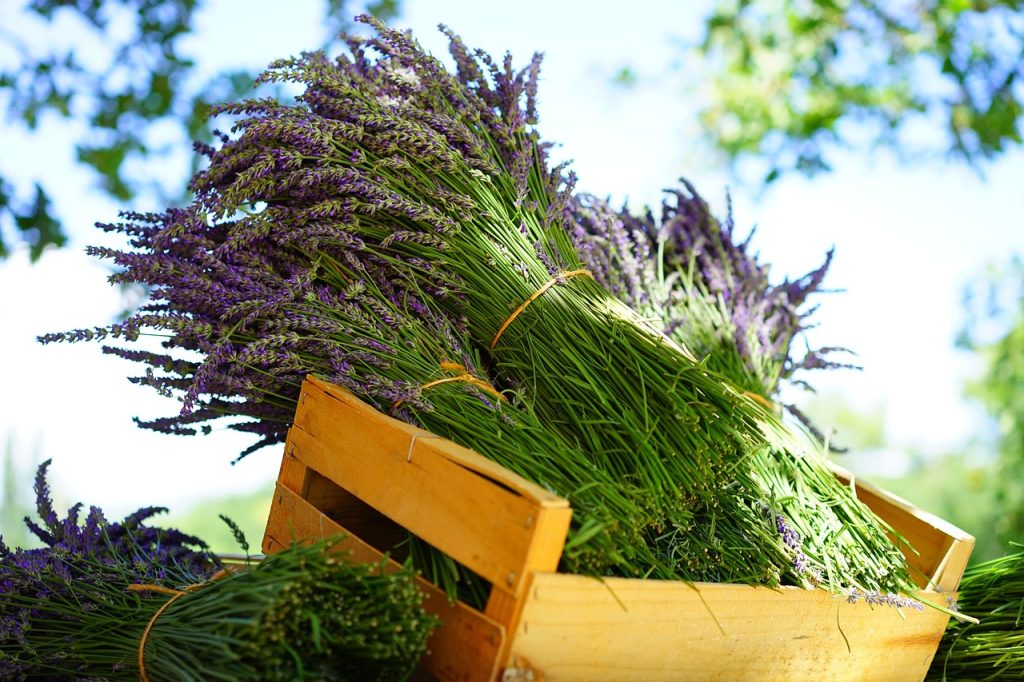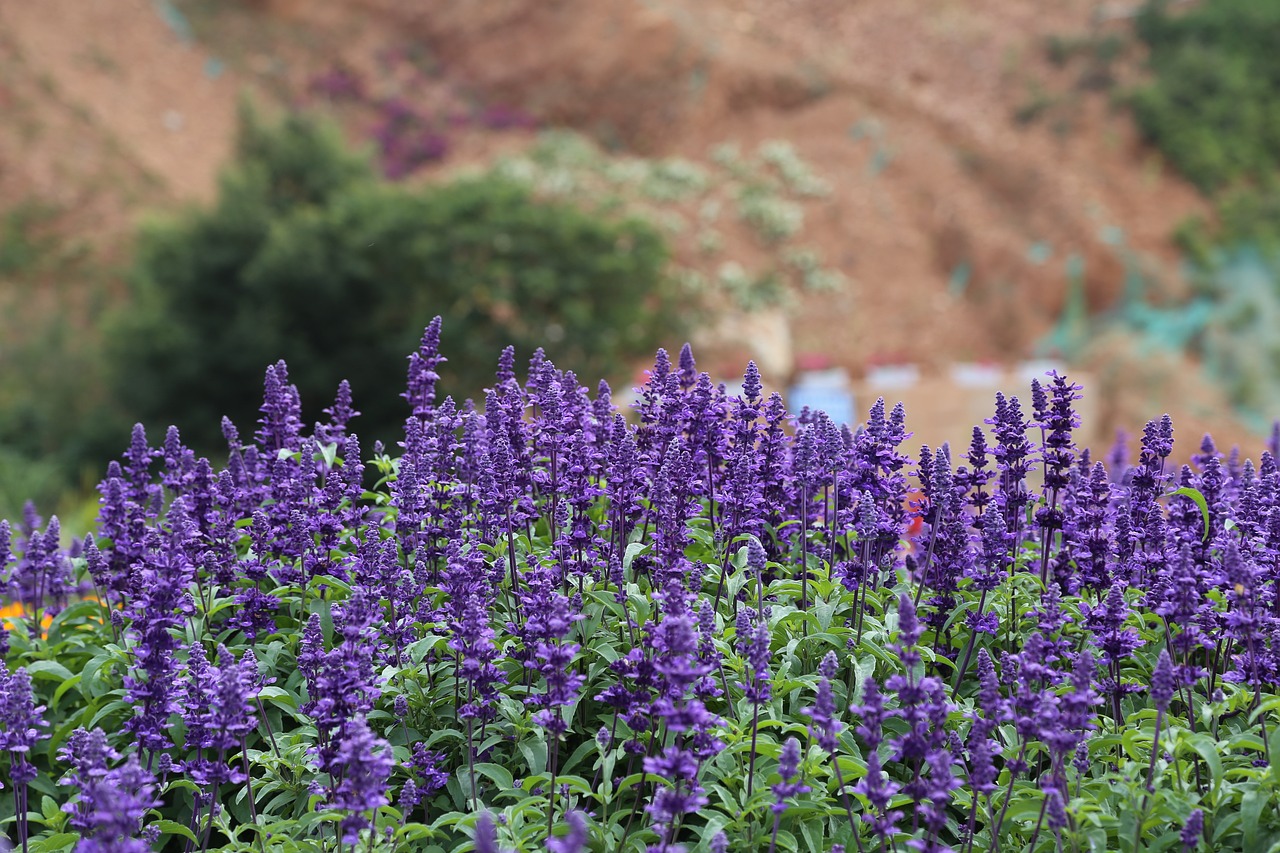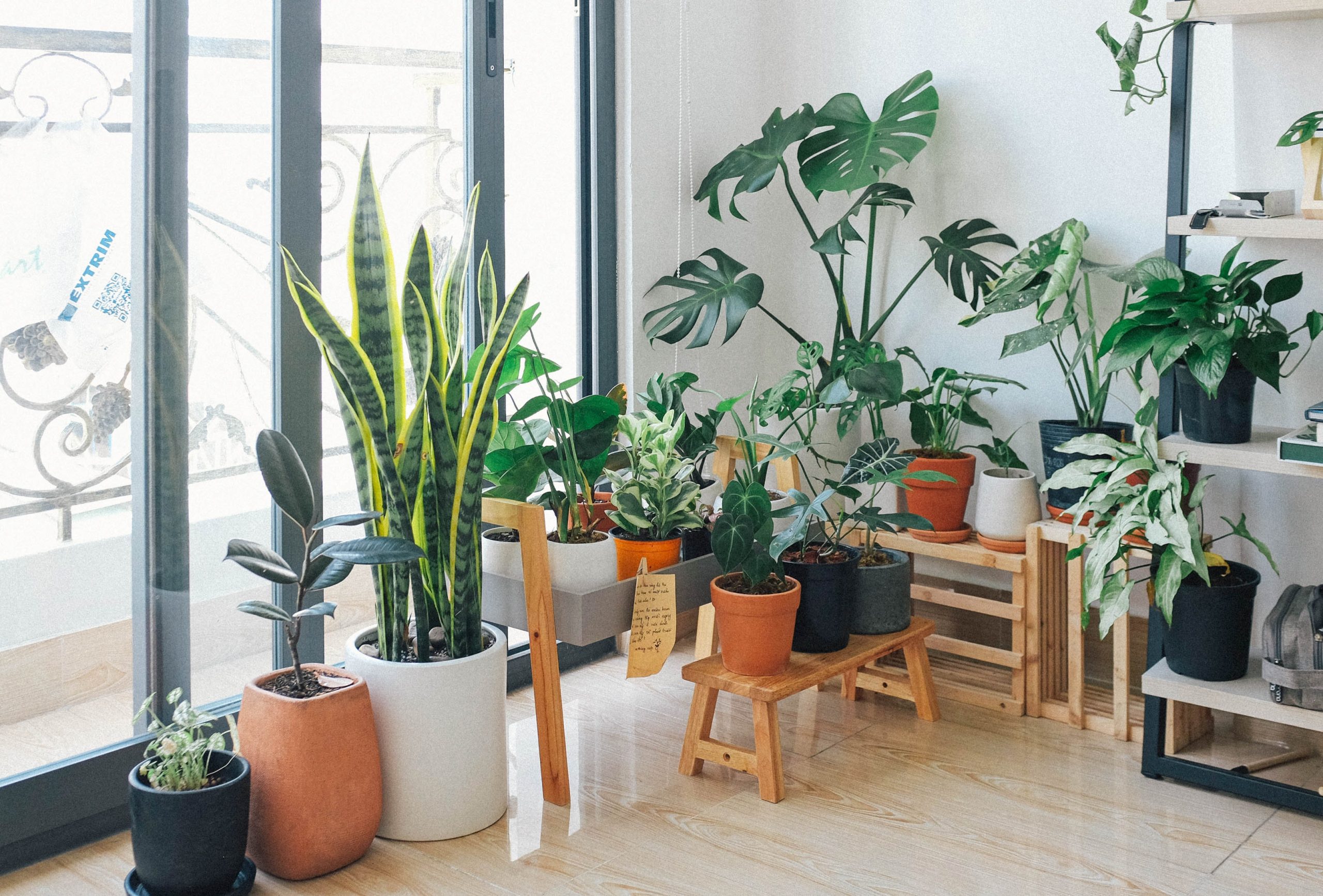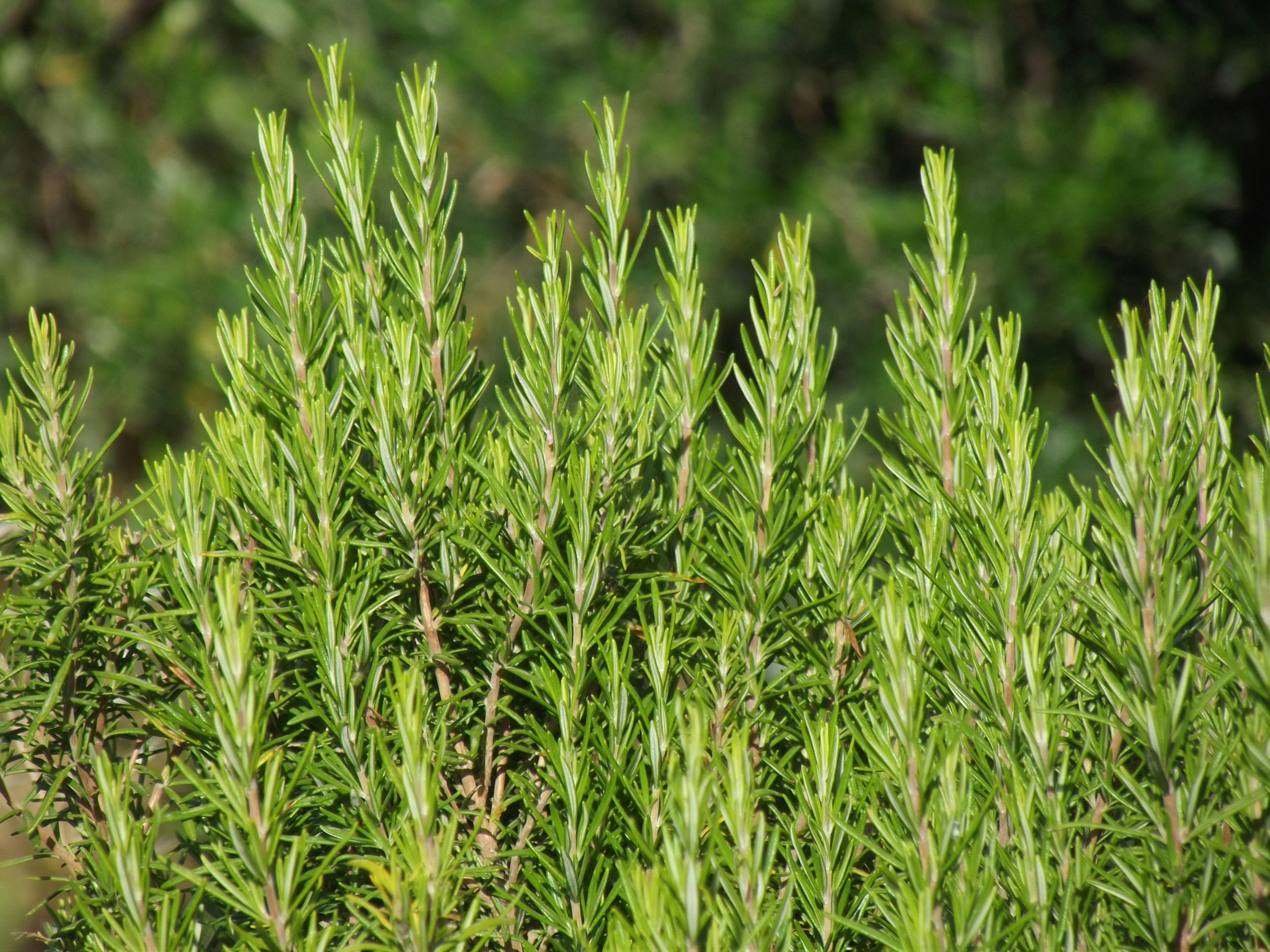Renowned for their enchanting fragrance, flowers of lavender are widely used in wedding bouquets, floral arrangements, home décor and skin care products.
Lavender plants add a touch of elegance and sophistication to outdoor spaces, whether used in formal gardens, informal cottage gardens, or as aromatic borders.
The color range of lavender flowers, spanning from soft lavenders and lilacs to deep purples and blues, adds diversity and charm to gardens, while attracting pollinators like bees and butterflies that add a beautiful, lively element to a garden.
Here’s a guide on how you can grow and care for lavender:

Description
Lavender is an aromatic herb that belongs to the mint family, Lamiaceae. Known for its fragrant flowers, it is widely cultivated for various purposes, including culinary, ornamental, and medicinal uses.
Lavender produces long, slender spikes adorned with small, tubular flowers. The blooms come in various shades of purple, blue, pink, and white, creating a visually pleasing display.
Lavender can be planted in borders, rock gardens, or as a low hedge.
| Botanical name: Lavendula spp. | Propagation: Seeds, cuttings |
| Common name: Lavender | Soil type: Loam, sandy loam |
| Family: Lamiaceae | Soil pH: 6.4-8.2 |
| Plant type: Perennial | Temperature: 70-900F |
| Hardiness zones: USDA zones 5-9 | Light: Full sun |
| Mature size: 2-3ft. tall, 3-4 ft. wide | Spacing: 2-3ft. |
| Flower color: Purple, blue, pink, white | Pollination: Insects |
| Leaf color: Gray-green | Toxicity: Toxic to dogs and cats |
| Bloom time: Summer | |
| Native area: Europe |
Lavender varieties to grow
There are many different species and cultivars of lavender, each with its own unique characteristics. Common species include Lavandula angustifolia (English lavender), Lavandula stoechas (Spanish lavender), and Lavandula x intermedia (Lavandin, a hybrid of English and spike lavender).
Choose a variety which is suitable to your climatic region.
Temperature requirements
Lavender prefers a climate with warm days and cool nights. It typically thrives in temperatures between 70-90°F (21-32°C) during the day and cooler temperatures at night.
Soil requirements
Lavender plants prefer to grow in well-drained soil and their roots do not love to sit in water. Grow lavender in loam or sandy loam soil with a pH range of 6.4 to 8.2. Avoid heavy or clayey soils which can lead to root rot and other issues due to poor drainage.
Light/Sun requirements
Lavender prefers to grow in an area that receives full sunlight (6-8 hours of direct sunlight per day).
When to plant Lavender
The best time to plant lavender is in April or May, when the soil has started to warm up.
Planting
Plant lavender in the spring or fall.
Space plants about 2 to 3 feet apart to allow for good air circulation.
Dig a hole slightly larger than the root ball, place the plant, and backfill with soil. Water thoroughly after planting.
How to Care for Lavender plants
Watering: Lavender is drought-tolerant once established, so be careful not to overwater. Allow the soil to dry out between waterings.
Water newly planted lavender regularly until they are established, then gradually reduce the frequency of watering.
Pruning: Prune lavender regularly to encourage bushy growth and prevent the plant from becoming woody.
Pruning should be done in the spring, cutting back about one-third of the plant.
Deadhead spent flowers to promote additional blooming.
Fertilizing: Lavender generally does not require a lot of fertilizer. Too much nitrogen can result in excessive foliage growth at the expense of flowers.
A light application of a balanced fertilizer in the spring is usually sufficient.
Mulching: Apply a layer of mulch around the base of the plant to help retain soil moisture, suppress weeds, and regulate soil temperature.
Winter Care
Lavender is generally hardy, but in very cold climates, it may benefit from some winter protection.
Mulch around the base of the plants to insulate the roots and protect them from winter temperature extremes.
How to Harvest and Store Lavender flowers

Harvest lavender when the flowers are in full bloom. The best time for harvesting is generally in the morning after the dew has dried but before the heat of the day.
The flowers should be fully open, and the color should be vibrant. The buds at the top of the spikes should be just starting to open. Avoid harvesting when the flowers are past their trime or when they are too young and haven’t fully developed.
Use sharp, clean pruning shears or scissors to make clean cuts. This helps prevent damage to the plant and reduces the risk of introducing diseases.
Avoid cutting into old wood, as lavender may struggle to produce new growth from the woody stems.
Hang harvested lavender upside down in a dry, dark, and well-ventilated space to dry.
Common problems
Lavender is susceptible to root rot in poorly drained soil, so good drainage is essential.
Watch for pests like aphids and spider mites and treat them promptly.




